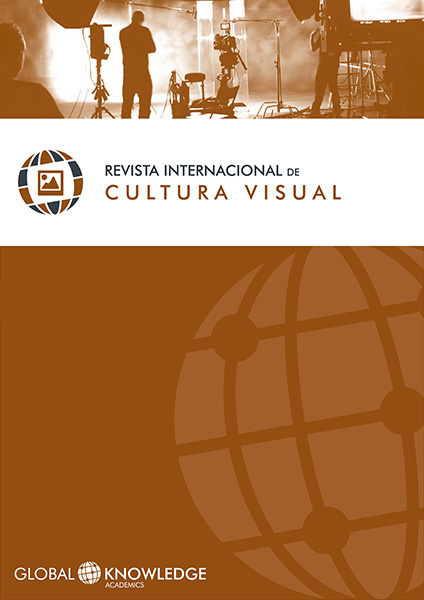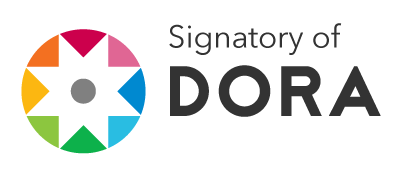Artistic Image in the Years of Lead
DOI:
https://doi.org/10.37467/gka-revvisual.v4.235Keywords:
Dictatorship, Politics, Brazilian Art, Tropicalia, Super 8, Hélio Oiticica, Second Art Biennial BahiaAbstract
The Brazilian dictatorship (1964-1984) directly influenced Brazilian arts. Various artists addressed death, torture, and riot scenes in their works. This era of upheaval and oppression played an important role in Brazilian visual art, films, music, theater, literature and politics and is very important to understand avant-garde art of the time and the pronounced changes of the arts in general. In this paper I will examine the ways in which Brazilian artists have expressed and responded to the social, economic and political crisis of dictatorship. Moreover they resisted American cultural imperialism and displayed culture and social realities of Brazil.
Downloads
Global Statistics ℹ️
|
590
Views
|
748
Downloads
|
|
1338
Total
|
|
References
Amaral, A. H. (1986). Obra sobre papel 30 anos. Campinas: Museu de Arte Contemporânea.
Baigorri, L. (2006). Vídeo: primera etapa el vídeo en el contexto social y artístico de los anos 60/70. Madrid: Brumaria.
Brett, G. (2007). Oiticica in London. Londres: Tate publishing.
Cavalcanti, J. D. (2005). Artes plásticas: vanguarda e participação política (Brasil anos 60 e 70). Campinas: UNICAMP.
Campos, H. (1971). Haroldo de Campos 1, p. 3. In: http://www.itaucultural.org.br/aplicExternas/enciclopedia/
ho/index.cfm?fuseaction=documentos&cd_verbete=4523&cod=680&tipo=2
Cardoso, I. E Lucchetti, R. F. (orgs.) (1990). Ivampirismo: O cinema em Pânico. Rio de Janeiro: Editora Brasil-América (EBAL).
Catálogo Galerie Jeu Du Paume (1992). “Hélio Oiticica”. Paris.
Catálogo Hélio Oiticica (1992). Rio de Janeiro, Centro de Arte Hélio Oiticica.
Costa, C. G. F. da & Sergl, M. J. (2007). A música na ditadura militar brasileira - Análise da sociedade pela obra de Chico Buarque de Holanda. Revista eletrônica de Iniciação Científica. Ago 2007. Ano I, n. 1. p. 35-40.
Favaretto, C. (1992). A Invenção de Hélio Oiticica. São Paulo: Edusp.
Goulart, S. (1997). “Cinema e artes Plásticas: os caminhos do experimental nos anos 70”. Cinema Brasileiro três olhares. Niterói: Ed. UFF.
Herkenhoff, P. (1999). Antônio Dias. São Paulo: Ed. Cosac & Naif.
Lima, A. M. (1996). Hélio Oiticica. Entrevista com Hélio Oiticica. A Cigarra. Site do Itaú Cultural, consultado no dia 27/11/2001.
Morais, F. (1995). Cronologia das Artes Plásticas no Rio de Janeiro. Rio de Janeiro: Topbooks.
Morais, F. (25/3/1968). O herói e o anti-herói anônimo. Site Itaú cultural: www.itaucultural.org.
Oiticica, H. (1986). Aspiro ao grande labirinto. Rio de Janeiro: Ed. Rocco.
Oiticica, H. (1992). Catálago da exposição Hélio Oiticica. Paris: Centre Georges Pompidou.
Oiticica, H. (1986). Folha de São Paulo. 25.01.1986.
Oiticica, H. (2009). Terra que Treme. In . Consultado em 04. 04.2009.
Oiticica, H. Trama da Terra que treme. IN: www. Itaucultural.org
Oiticica, H.; Clark, L. (1998). Cartas: 1964-74. Rio de Janeiro: Editora da UFRJ.
Salomão, W. (1996). Hélio Oiticica, qual é o parangolé? Rio de Janeiro: Ed. Relume Dumará.
Downloads
Published
How to Cite
Issue
Section
License
Those authors who publish in this journal accept the following terms:
-
Authors retain copyright.
-
Authors transfer to the journal the right of first publication. The journal also owns the publishing rights.
-
All published contents are governed by an Attribution-NoDerivatives 4.0 International License.
Access the informative version and legal text of the license. By virtue of this, third parties are allowed to use what is published as long as they mention the authorship of the work and the first publication in this journal. If you transform the material, you may not distribute the modified work. -
Authors may make other independent and additional contractual arrangements for non-exclusive distribution of the version of the article published in this journal (e.g., inclusion in an institutional repository or publication in a book) as long as they clearly indicate that the work was first published in this journal.
- Authors are allowed and recommended to publish their work on the Internet (for example on institutional and personal websites), following the publication of, and referencing the journal, as this could lead to constructive exchanges and a more extensive and quick circulation of published works (see The Effect of Open Access).













